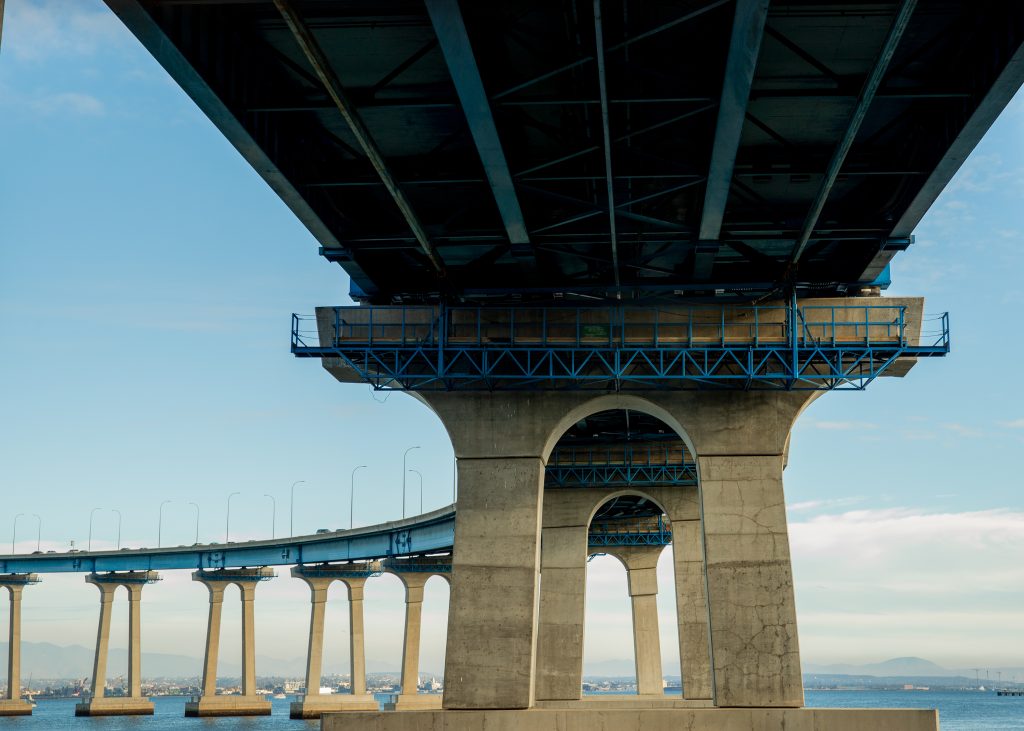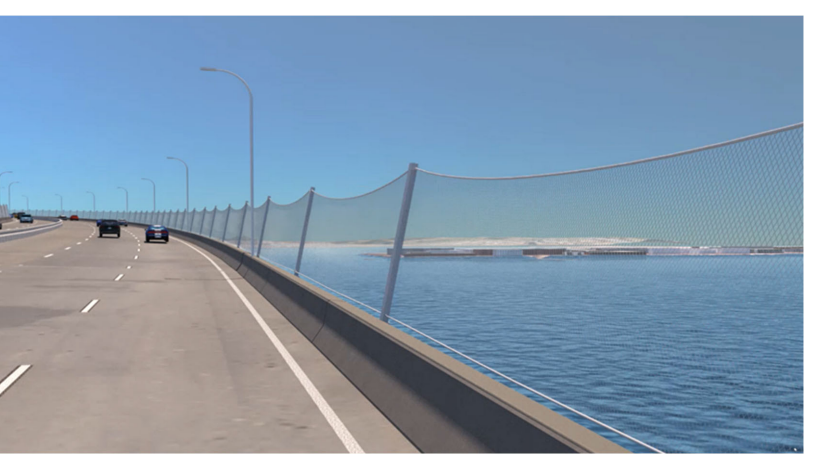
The anti-suicide net planned for the San Diego-Coronado Bay Bridge is one step closer to fruition after funding for its design was secured last week.
The California Transportation Commission (CTC) at its January meeting allocated $14 million in funding to design a suicide deterrent system on the bridge, as a part of its State Highway Operation and Preservation Program (SHOPP).
Rendering of vertical net: Caltrans — Final Initial Study June 2022 Caltrans chose stainless steel, vertical netting as its suicide deterrent system after conducting a yearlong feasibility study. The project, which also includes minor updates to the bridge’s toll plaza, carries an estimated cost of $127,000,000, with construction beginning in 2026-27.
Caltrans chose stainless steel, vertical netting as its suicide deterrent system after conducting a yearlong feasibility study. The project, which also includes minor updates to the bridge’s toll plaza, carries an estimated cost of $127,000,000, with construction beginning in 2026-27.
Coronado’s bridge ranks second in the nation for suicides, second only to the Golden Gate Bridge, whose anti-suicide net is projected for completion this year. (An active lawsuit alleges that the project may take longer – and cost more – than originally anticipated.)
“This new funding is an important next step to allow Caltrans to move into the final design phase of the project,” said Caltrans District 11 Director Gustavo Dallarda. “(This is) an untraditional project for Caltrans, but an important one that will have a big impact on the lives of many Californians.”
Untraditional is correct: As a department of transportation, Caltrans’ funding is not allocated for mental health services. Lawmakers were able to levy transportation funding to the issue because people who jump from the bridge usually abandon their cars, causing traffic congestion – something Caltrans does have funding to mitigate.
California itself does have funding for mental health, though: It ranks ninth in the nation for percentage of expenditures allocated to such services (3.2 percent). In 2004, it passed a 1 percent tax on incomes over $1 million that has generated billions for the Mental Health Services Act (MHSA).
But the Steinberg Institute, a public policy nonprofit that supported the measure creating the MHSA, said last year that lack of accountability makes measuring the program’s success difficult. It supported a now-defunct bill that would require more planning and transparency with the funding.
“While many counties have adopted innovative approaches to expand and improve behavioral health services, there is little accountability for measuring progress or achieving specific outcomes,” said Steinberg Institute Executive Director Maggie Merritt. “We continue to see people living with severe mental illness suffering on our streets or cycling through hospitalizations with no long-term recovery in sight.”
It’s a multifaceted problem, and one whose solution no state has yet found. As California grapples with the problem, those in crisis continue to attempt or complete suicide, and the San Diego-Coronado Bay Bridge is an easily accessible means of doing so.
Access plays a role in whether suicidal individuals complete their plans as most suicides are attempted during short-term crises. Nearly 50% of attempted suicide survivors reported fewer than 20 minutes passing between their suicidal ideation and attempt, according to the Harvard School of Public Health. Most survivors of suicide attempts do not go on to die by suicide.
When access to lethal means is reduced or eliminated, suicide attempts decrease, HSPH reports. As California continues to contend with the nation’s mental health crisis, restricting access to the 200-foot bridge can be enough to thwart would-be jumpers from attempting suicide through other means.
If you or someone you know needs help, call the 24-hour Suicide & Crisis Lifeline at 988.




